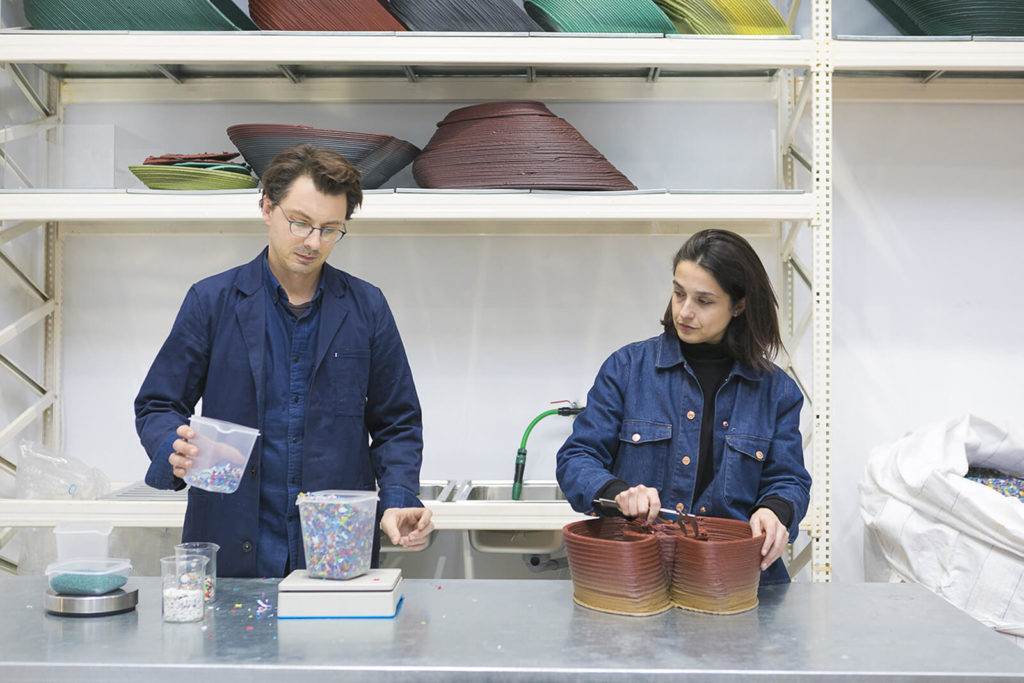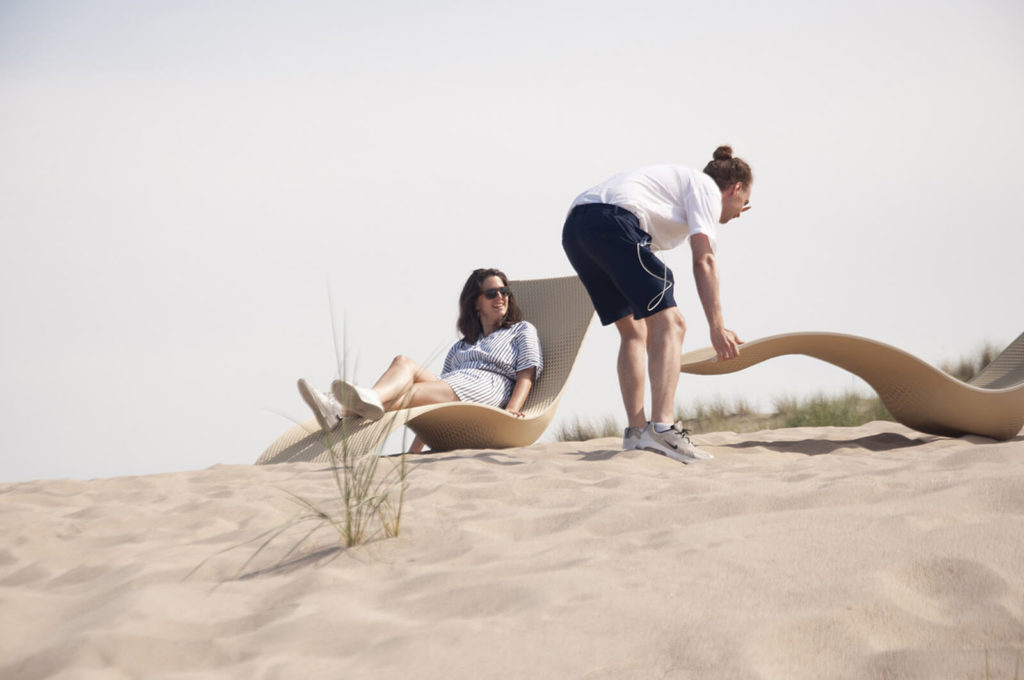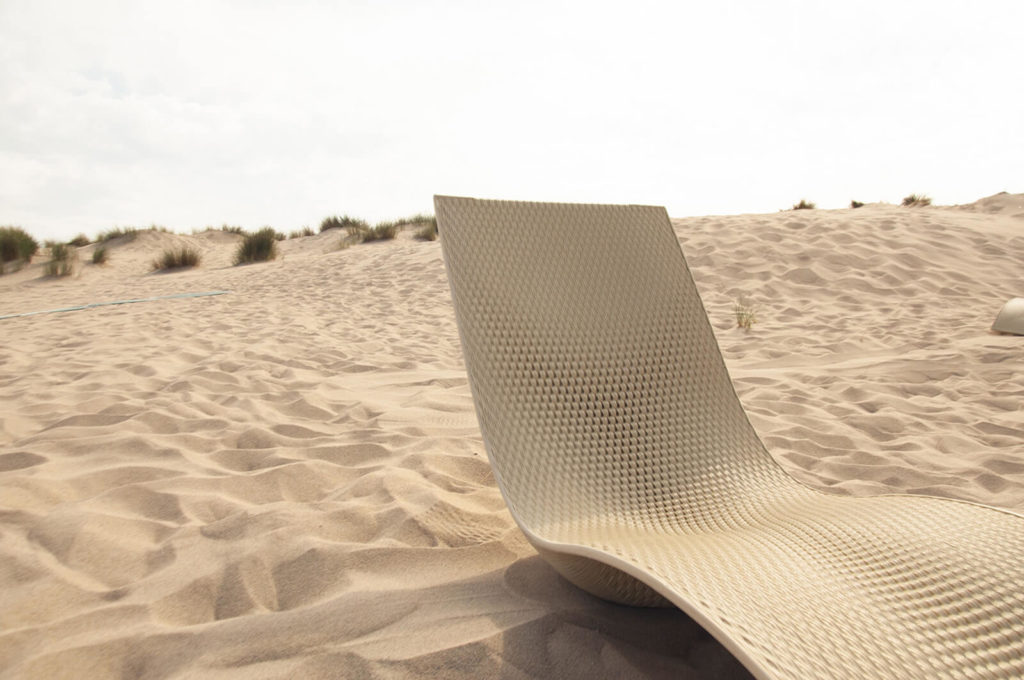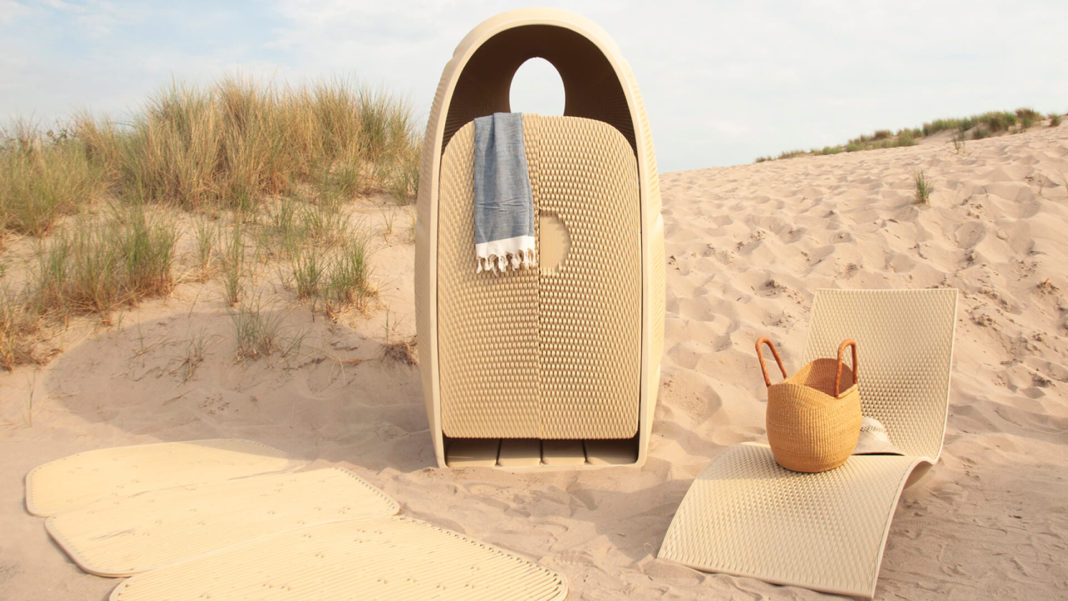I am taking a genuine pleasure to discover what can be done with plastic waste and 3D printing. Ever since I re-shared this exclusive feature on recycled materials for 3D printing, I have been looking for that company that will use plastic waste for mass production of 3D printed components. I know, it’s still an utopia but being able to leverage plastic waste in a mass production environment would be, in my opinion, a drastic way to address this environmental issue. Until then, we need to give kudos to organizations and entrepreneurs that are already playing their part by creating on-demand and custom-made 3D printed products using plastic waste.
The latest product I have discovered is a limited collection of 3D printed beach furniture, designed and produced by The New Raw, a Rotterdam-based Research & Design studio. It’s been a few years (5 years exactly) that the studio has been exploring the merging fields of digital fabrication and material resourcing, but among all their creations, 3D printed beach furniture are a very original way to move from marine plastic waste to product with 3D printing technology. They also well match the current times where most people are ending their summer vacations.
Designed by Dutch architects Panos Sakkas and Foteini Setaki, the 3D printed furniture are part of a limited edition collection called ‘The Elements’. The collection which includes a fitting room, a footpath, and a sunbed, is inspired by the diversity of elements characteristic to the shore – “the carcasses of marine organisms, and saltation patterns on the sand and the waves“.


Image: Courtesy of The New Raw 
A closer look at the texture of the furniture Image: Courtesy of The New Raw
Each object is crafted from 80% recycled plastic and designed to be 100% recyclable, rendering itself as a promising raw material for future applications.
“Plastic is a major contributor to the pollution of the seas. However, living in urban regions, we tend to forget about our dependence on the sea that is related to food and oxygen supply,” state Sakkas and Setaki.
The design would be the result of a rigorous ‘form follows process’ approach in which digital manufacturing gave shape to a refreshing visual language and a unique ergonomic design. As seen in the pictures, the shapes of each furniture perfectly hug any beach’s environment and reveal 3D encoded textures, which as per the architects “act equally as ornament and as functional components to achieve climatic comfort during use, natural air ventilation, light irradiation, water drainage and cooling“.
As for the manufacturing process, we know from stirworld, that a programmed robot movement sculpted the forms layer by layer, bringing together a striking display of colours, textures and geometries; the engineered input minimised the printing and assembly time.
So far, the collection has upcycled over 720 kg of plastic waste and like many advocates of the circular economy approach, a decentralised process in which local plastic waste is used as a material resource for projects has been privileged to any other manufacturing process.
Remember, you can post job opportunities in the AM Industry on 3D ADEPT Media free of charge or look for a job via our job board. Make sure to follow us on our social networks and subscribe to our weekly newsletter : Facebook, Twitter, LinkedIn & Instagram ! If you want to be featured in the next issue of our digital magazine or if you hear a story that needs to be heard, make sure you send it to contact@3dadept.com






